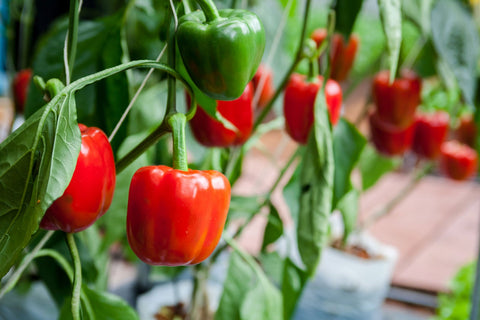Zucchini and yellow squash, with their vibrant colors and versatile culinary uses, are beloved staples in home gardens around the world. Whether sautéed, grilled, baked into bread, or spiralized into noodles, these tender summer squash varieties add a burst of flavor and nutrition to countless dishes. In this comprehensive guide, we'll delve into the fascinating world of zucchini and yellow squash, exploring everything from their origins and nutritional benefits to essential tips for growing these prolific vegetables in your own backyard.The following content also has some reference value for raised garden beds.
The Allure of Zucchinis and Yellow Squash
Zucchini and yellow squash belong to the Cucurbitaceae family, which includes cucumbers, pumpkins, and melons. Native to the Americas, these tender summer squash varieties have been cultivated for thousands of years and have become cherished ingredients in cuisines around the world.
Zucchini, or courgettes, are typically harvested when young and tender before their seeds fully develop. They have a mild, slightly sweet flavor and a tender texture, making them incredibly versatile in cooking. Yellow squash, characterized by its bright yellow skin and delicate flavor, is equally prized for its culinary versatility and nutritional value.
Nutritional Benefits
Both zucchini and yellow squash are low in calories and rich in essential nutrients, making them excellent additions to a balanced diet. They are particularly high in vitamins A and C, as well as potassium, folate, and fiber. These nutrients support overall health and well-being, promoting healthy digestion, strong immunity, and radiant skin.

Growing Zucchinis and Yellow Squash
- Location: Choose a sunny spot in your garden with well-drained soil for planting zucchini and yellow squash. These vegetables thrive in full sunlight and require ample space to spread out and grow.
- Soil Preparation: Prepare the soil by incorporating organic matter such as compost or aged manure to improve soil fertility and structure. Zucchini and yellow squash prefer slightly acidic to neutral soil with a pH between 6.0 and 7.0.
- Planting: Sow zucchini and yellow squash seeds directly into the garden bed after the danger of frost has passed and the soil has warmed to at least 60°F (16°C). Space the seeds or seedlings 24-36 inches apart in rows or hills to allow for adequate air circulation and room for growth.
- Watering: Maintain the soil moisture, ensuring it remains adequately hydrated but not overly saturated during the entire growth period. Water deeply and evenly, providing approximately 1-2 inches of water per week, depending on weather conditions and soil moisture levels.
- Mulching: Apply a layer of organic mulch such as straw, shredded leaves, or grass clippings around zucchini and yellow squash plants to conserve moisture, suppress weeds, and regulate soil temperature. Mulching also helps prevent soil erosion and compaction, promoting healthy root development.
- Fertilizing: Feed zucchini and yellow squash plants with a balanced fertilizer or compost tea every 4-6 weeks during the growing season to replenish soil nutrients and support healthy growth and fruit production.
- Pest and Disease Management: Monitor plants regularly for signs of pests such as squash bugs, aphids, and cucumber beetles, as well as common diseases like powdery mildew and blossom end rot. Practice good garden hygiene, including removing debris and weeds, to reduce the risk of pest infestations and disease outbreaks.

Harvesting and Storage
Zucchini and yellow squash can be harvested when they reach their desired size, typically 6-8 inches long for zucchini and 4-6 inches long for yellow squash. Remove the squash from the vine without damaging the plant. Use pruning shears or a sharp knife.
Store freshly harvested zucchini and yellow squash in the refrigerator for up to one week, or blanch and freeze them for longer-term storage. Enjoy these delicious summer vegetables raw in salads, cooked in stir-fries and casseroles, or grilled to perfection.

Conclusion
Growing zucchini and yellow squash in your own backyard garden is a rewarding experience that allows you to enjoy the freshest, most flavorful produce possible. By following these essential tips for planting, caring for, and harvesting zucchini and yellow squash, you can cultivate a thriving garden and enjoy a bountiful harvest of zesty, nutritious vegetables all season long. So roll up your sleeves, dig in the dirt, and get ready to savor the joys of growing zucchini and yellow squash with abundance.









